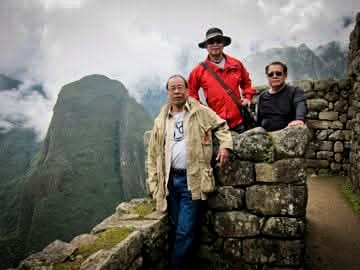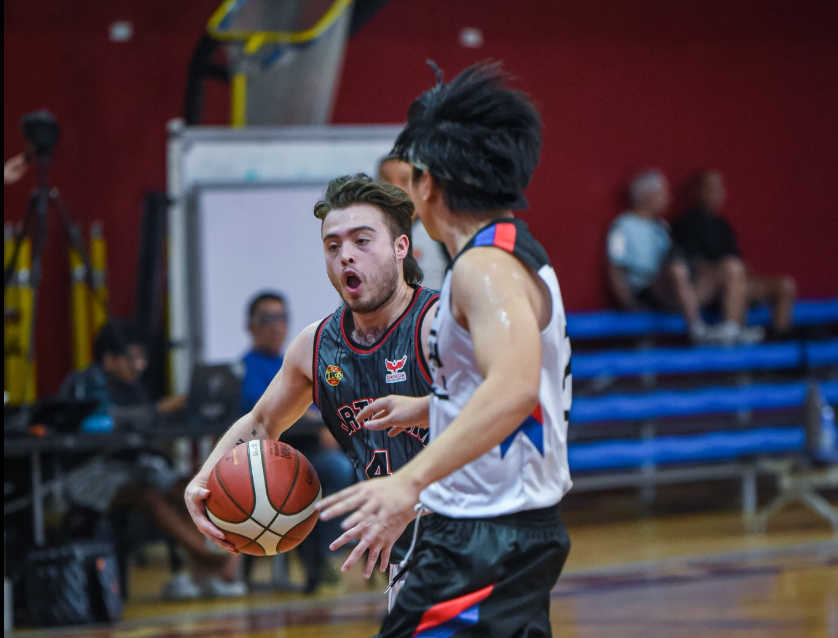Business
Brewing a Systems Response to the Philippine Coffee Collapse
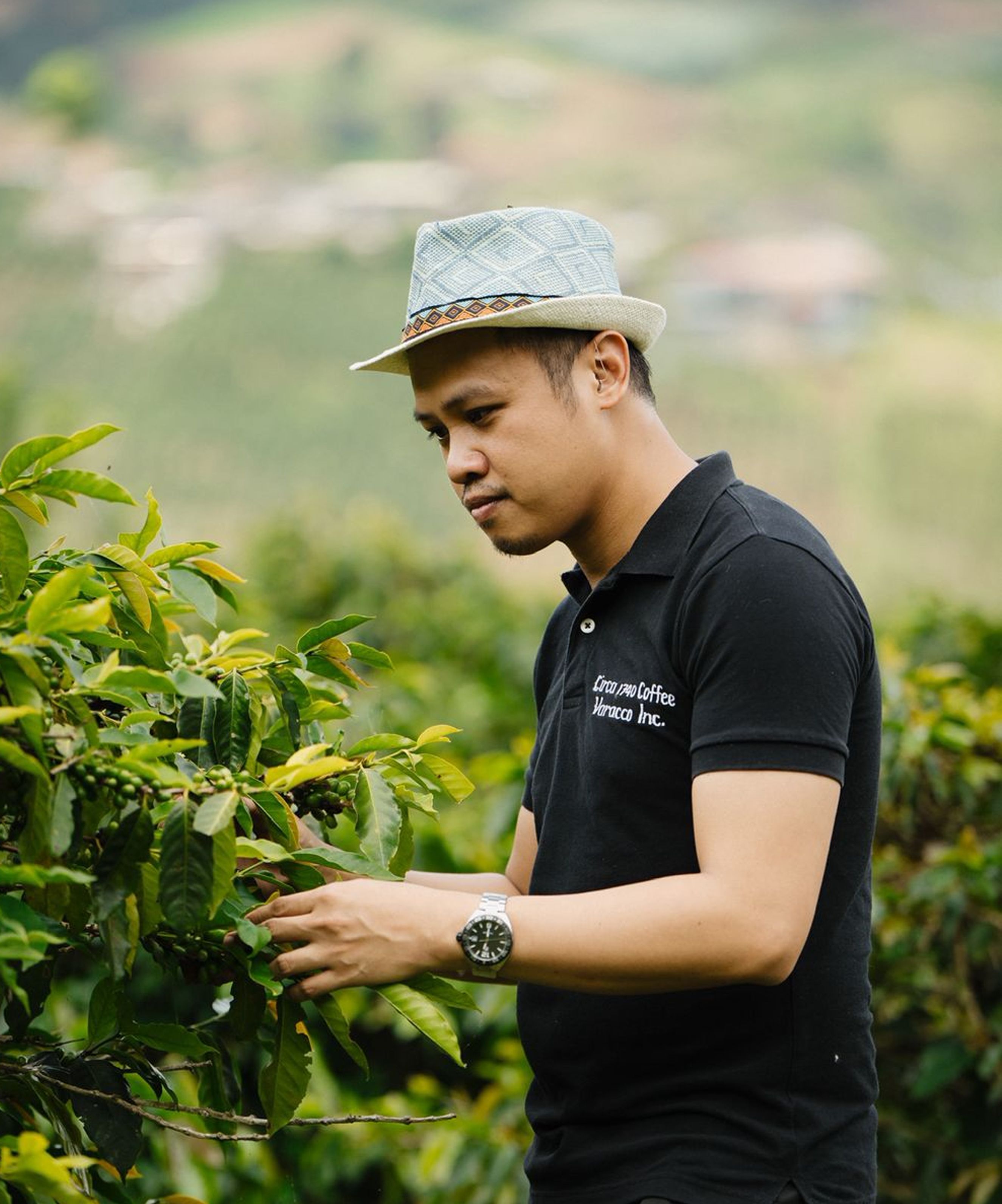
Every morning, years ago, Ariestelo Asilo 2006 would brew his coffee the way Batangueños have done for generations, beans crushed with a mortar and pestle, then boiled in a soot-darkened takure, that well-worn aluminum kettle found in countless Filipino homes. And yes, on some mornings, he would pour the coffee straight over a steaming pile of rice—no kidding.
Now, years later, Ariestelo can brew coffee using a San Remo Verona espresso machine, a Bialetti Moka Pot, or, on slower, more contemplative mornings, a Hario V60 pour-over. He can even identify your coffee bean at a glance: Liberica, Robusta, Excelsa, or Arabica.
But despite the newfound precision and sophistication, coffee does not feel the same anymore. These days, it gives him acid reflux and the occasional heart palpitation. And more than that, it carries a kind of weight. Because now, he knows what he did not know before: that behind every cup lies an industry in slow collapse, one that has left far too many farmers behind.
If you do not know him well, you might think it unlikely for someone like Ariestelo Asilo, the proud son of a kubrador ng jueteng and born with a hearing impairment, to rise to national and international recognition. But the eternally curious boy from Bauan, Batangas, never quite learned how to take no for an answer.
Aries, as he is fondly known, was the 2021 TOYM awardee for Social Entrepreneurship. He was also named one of the United Nations’ Best Small Business Awardees, one of only 50 chosen globally from over 2,000 entries. His work has earned him honors such as the Southeast Asia Conservation Optimism Award for Climate, the UPAA and UPLB Distinguished Alumni Awards, and the Outstanding Nutritionist-Dietitian Award. His list of awards is so long that it is now difficult to keep track of them.
He credits much of his ability to dream big to the Upsilon Sigma Phi, which prods brothers to keep gunning for leadership positions, and helped open his world far beyond the quiet town he came from. And while his personal journey has defied the odds, the fate of Philippine coffee remains anything but secure.
The Philippine coffee industry, once a global leader, now produces less than 60,000 metric tons annually, representing just a fraction of its potential. From over 200,000 hectares of productive land in the 1960s, our coffee-growing footprint has declined precipitously, primarily due to systemic neglect, urban land conversion, and limited access to agritechnology. This collapse is not only an agricultural concern; it is a development issue that intersects with land use policy, rural livelihoods, food systems, and climate resilience.
The dominant framing of the coffee crisis often centers on farmer behavior or productivity gaps. But the deeper problem is structural – a fragmented value chain, short investment horizons, and a low-value domestic market that relies heavily on imports. The interventions required to reverse this trajectory must be systemic, inclusive, and innovation-driven.
Why the Philippines is Falling Behind: Lessons from Our Neighbors
The problems facing the Philippine coffee sector are not unique. Soil degradation, climate shifts, aging farmers, and volatile markets affect producers across Southeast Asia. Yet countries like Vietnam and Indonesia have managed to turn these same challenges into opportunities.
Vietnam, now the world’s second-largest coffee exporter, scaled up through state-led investments in replanting, technical support, and infrastructure. Its government-aligned policy, finance, and industry around a unified national goal: to produce high volumes of Robusta for global markets. Cooperatives, exporters, and smallholders work within a structured, data-driven system that rewards consistency and scale.
Indonesia, meanwhile, has focused on both bulk Robusta and specialty Arabica production. With strong regional branding and semi-processed post-harvest methods like wet-hulling (giling basah), Indonesia has carved out distinct global niches. Government-backed extension services, local buyer networks, and traceable supply chains have enabled smallholders to tap into both domestic and export markets.
The Philippines, by comparison, has remained fragmented—too small to compete on volume, too underdeveloped to lead in quality. Our nurseries are outdated, our post-harvest systems underinvested, and our producers largely disconnected from high-value markets. What’s missing is not capacity, but coordination.
From Fragmentation to Integration: The Sectoral Challenge
Current institutional efforts such as the Philippine Coffee Industry Roadmap (2017–2022, 2023–2028) have outlined pathways for recovery. However, implementation remains uneven. Coordination among national agencies (e.g., DA, DTI, and DAR), local government units, cooperatives, and agribusinesses has been weak. Financing programs remain inaccessible for most smallholder farmers, who are burdened by loan prerequisites, high interest rates, and lengthy ROI cycles—especially since coffee trees take 3–5 years before they bear commercially viable fruit.
This has led to a vicious cycle: poor access to quality seedlings and inputs, poor yields, poor income, inability to invest in farm rehabilitation, and finally, land conversion. In Batangas and Cavite, thousands of hectares of coffee farms have been sold for residential and commercial development, transforming once-productive agricultural communities into urban enclaves.
Meanwhile, 90% of the domestic coffee market is captured by instant coffee blends. Most of these rely on imported Robusta, limiting domestic growers to low-margin, bulk-grade production. The lack of demand for specialty coffee varieties like Liberica (Barako), Excelsa, and Arabica has stunted value chain upgrading.
Varacco and ThinnkFarm: A Systems-Based Model for Coffee Regeneration
In response to this multidimensional problem, Varacco Inc. and ThinnkFarm have developed a tech-enabled, systems-oriented model that addresses the challenges across the coffee value chain, from nursery development to market access.
Varacco (www.varacco.com) integrates climate-smart agriculture, IoT-enabled monitoring, and demand-driven enterprise development to support smallholder coffee growers. Since 2018, Varacco has expanded its operations from Batangas to Mindanao, providing high-quality planting materials, post-harvest support, and market linkages for specialty coffee.
Complementing this is ThinnkFarm (www.thinnkfarm.com), a non-profit platform that leads capacity-building, community organizing, and innovation design. Together, the two entities operate on a shared framework known as COFFEE – Coffee-based Farming and Entrepreneurship Engagement program. Through this framework, the system addresses:
- Community-Based Technology Transfer – Deployment of low-cost IoT sensors in nurseries and farms to collect real-time data on soil health, temperature, and water availability.
- Access to Biofertilizers – Introduction of nano-enabled inputs that reduce chemical dependency and shorten seedling growth cycles from 6 to 8 months to just 3 to 4.
- Capacity Building – Training of farmers and technicians in digital agriculture, nursery accreditation, and climate adaptation strategies.
- Value Chain Activation – Building local demand through flagship outlets and consumer-facing innovations like Varacco’s dip coffee.
As of 2025, Varacco and ThinnkFarm have assisted around 150 farmers and agri-preneurs, created over 50 jobs for youth and women, and begun the accreditation of the country’s first digital coffee nurseries in partnership with the Bureau of Plant Industry.
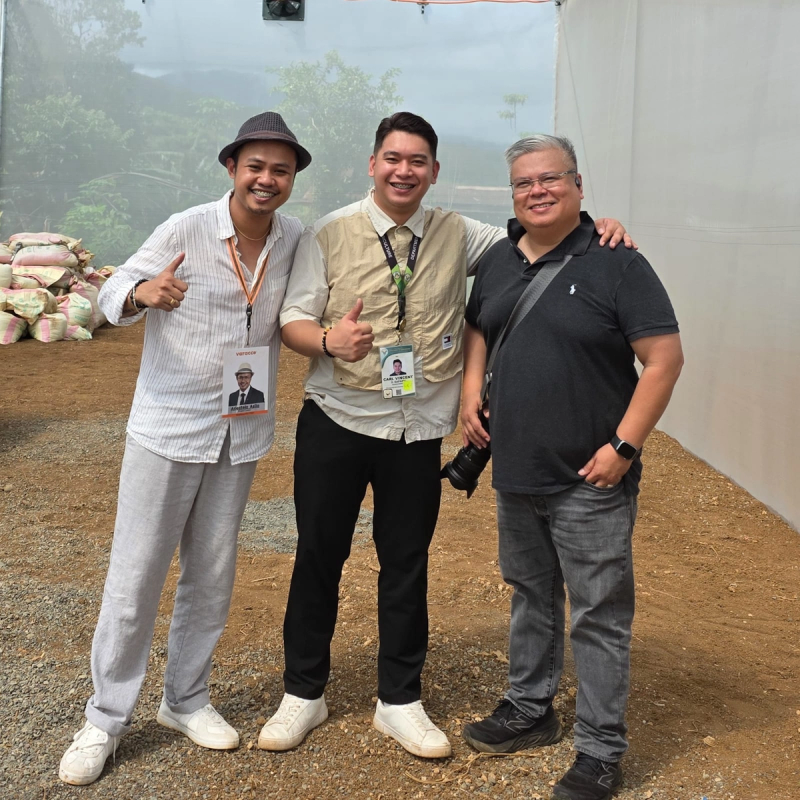
At the center of this effort is Smart FARM—a pioneering initiative that not only integrates IoT-based monitoring and digital traceability, but also explores the legal dimensions of agricultural innovation, including intellectual property rights and indigenous justice. This aspect is led by Varacco's Chief Strategy Officer, Atty. Javier Flores ’89.
Smart FARM is further supported by technical expertise on pest and disease management, soil systems, and horticultural strategies, thanks to the guidance of agriculturist Carl Vincent Gapasin 2021, the current Officer-in-Charge of BPI’s Crop Research and Production Services Division. Gapasin affirms that the Bureau of Plant Industry (BPI) is "actively reviewing nursery protocols to assess the viability of incorporating sensor-based environmental monitoring," such as humidity, temperature, and soil moisture sensors—technologies that Smart FARM already pilots.
“IoT-based monitoring systems and digital recordkeeping provide transparency, minimize human error, and give real-time insights into nursery conditions,” says Gapasin. “These insights allow us to respond dynamically to changing climate patterns. With real-time data, we can intervene before damage is done, not after.” These insights are critical to ensuring the vigor and survivability of seedlings, a foundational element of revitalizing coffee farms under climate stress.
IoT and Nursery Digitalization as Scalable Entry Points
Another unique contribution of the Smart FARM model is the digitalization of coffee nurseries, often overlooked in sector development plans. Using IoT-based systems, Varacco monitors temperature, soil moisture, and nutrient content to optimize seedling production. These nurseries serve as entry points for scaling digital agriculture in upland and remote areas.
According to Gapasin, BPI envisions "joint accreditation of community nurseries with private R&D partners under harmonized standards," adding that Varacco’s nurseries in Mindanao and the like of Bukid Amara in Quezon province are promising models. The agency is also exploring outcome-based seedling distribution where the private sector funds propagation, while the government provides monitoring and extension services. “It’s not enough to give away seedlings. What matters is whether they survive, thrive, and deliver income,” Gapasin emphasizes. “That’s why outcome-based models are so important—they keep all parties accountable.”
The shift from manual to data-driven seedling production can result in:
- Twice the seedling survival rates during transplanting
- 30 to 40% savings in water usage
- Up to 50% reduction in seedling growth time when integrated with nano-hormone and nano-biofertilizer application
Gapasin highlights that BPI is also "revisiting nursery standards and propagation protocols" to align with new science-based methods that reduce transplant shock and improve uniformity. Collaborations with research institutions are underway to pilot these improved techniques across BPI Centers. “We are piloting methods that can shorten the seedling growth period without compromising plant health,” he says. “The goal is to make the accreditation process science-aligned but also accessible to small community nurseries.”
In places like Bukidnon, the Smart FARM approach has been piloted with positive results, setting a precedent for a potential nationwide rollout. To support Geographically Isolated and Disadvantaged Areas (GIDAs), BPI is enhancing its outreach through accreditation caravans, propagation starter kits, and technical support—often coordinated through the DA-High Value Crops Development Program (HVCDP). “Our regional teams bring the certification process to the farmer, not the other way around,” says Gapasin. “Especially in upland areas, that logistical shift makes all the difference.”
Challenges in Scaling: Policy and Incentives
Despite its promise, scaling this model requires more than technology. Policy incentives under the CREATE Act and Renewable Energy Act can play a catalytic role, offering enhanced deductions for R&D, equipment, and sustainability investments. However, current awareness and uptake among agribusinesses and LGUs remain low.
Varacco is now working with academic institutions, business groups, and impact investors to demonstrate how IoT-based, sustainability-aligned agri-enterprises can qualify for income tax holidays, zero-rated imports of green technologies, and ESG-linked financing.
Moreover, integrating this model into the national coffee strategy will require convergence platforms, where government agencies, MSMEs, and IP groups co-design programs instead of operating in silos. Gapasin stresses the need for "harmonizing the roles of key players across the coffee value chain," including DA Assistant Secretaries, ATI, PCA, DA-RFOs, and the Bureau itself. “Siloed efforts are what got us here in the first place,” he asserts. “If we want systemic change, then convergence isn’t optional—it’s essential.” He cites the commodity board meetings led by Asec. Philippine Young as a promising start.
Toward a Regenerative Coffee Economy
The collapse of Philippine coffee is not irreversible. But it demands a fundamental rethinking of how we approach agricultural regeneration – from subsidies and charity to systems design, inclusive financing, and tech-enabled learning ecosystems.
BPI’s public-private partnership model, as envisioned by Gapasin, includes open data systems for traceability, innovation grants for IP cooperatives, and shared facilities for processing and postharvest handling. “BPI hopes to build a coffee industry that is not only more productive but also farmer-centered and climate-resilient,” he says.
Varacco and ThinnkFarm are demonstrating that with the right blend of innovation, collaboration, and accountability, we can rebuild an industry that is climate-resilient, farmer-led, and market-responsive. The future of Philippine coffee should not rest solely on the shoulders of the farmer. It should be shared by institutions, entrepreneurs, consumers, and policymakers, each playing a role in transforming the bitter legacy of collapse into a regenerative story of revival.
With inputs from Ariestelo Asilo and Carl Gapasin
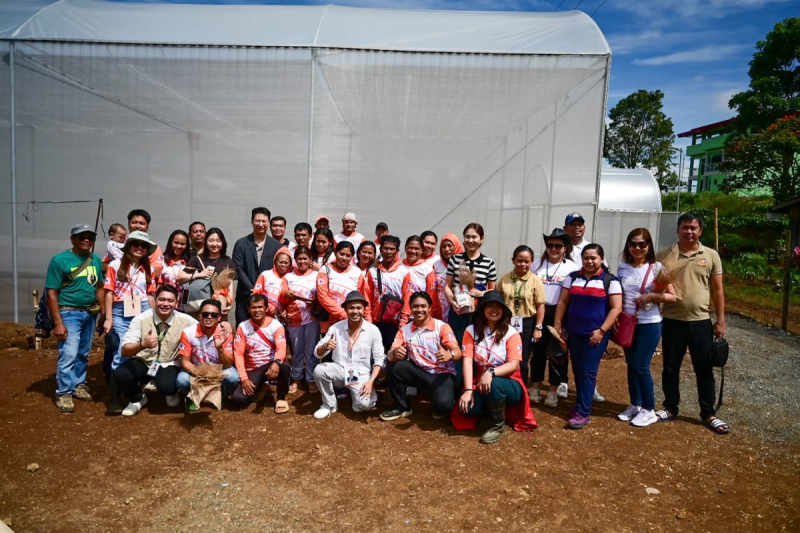
About the Author

Javier P. Flores
A Juris Doctor from the University of the Philippines College of Law, he is a partner at the Flores & Ofrin Law Office, with expertise in corporation law, property, and litigation. Beyond the courtroom, Javi has made a name for himself as a publisher and editorial force. He is the co-owner of Milflores Publishing, a multi-awarded publishing house known for producing books that seek to elevate Filipino literature. He also founded League Magazine, a publication that spotlights the best governance practices of local leaders. Javi is also a two-time Master Photographer of the Camera Club of the Philippines. He was a former Associate Editor of the Philippine Collegian, the country’s oldest and longest-running student newspaper. Javi also served two terms on the Board of Editors for the Integrated Bar of the Philippines Law Journal.
